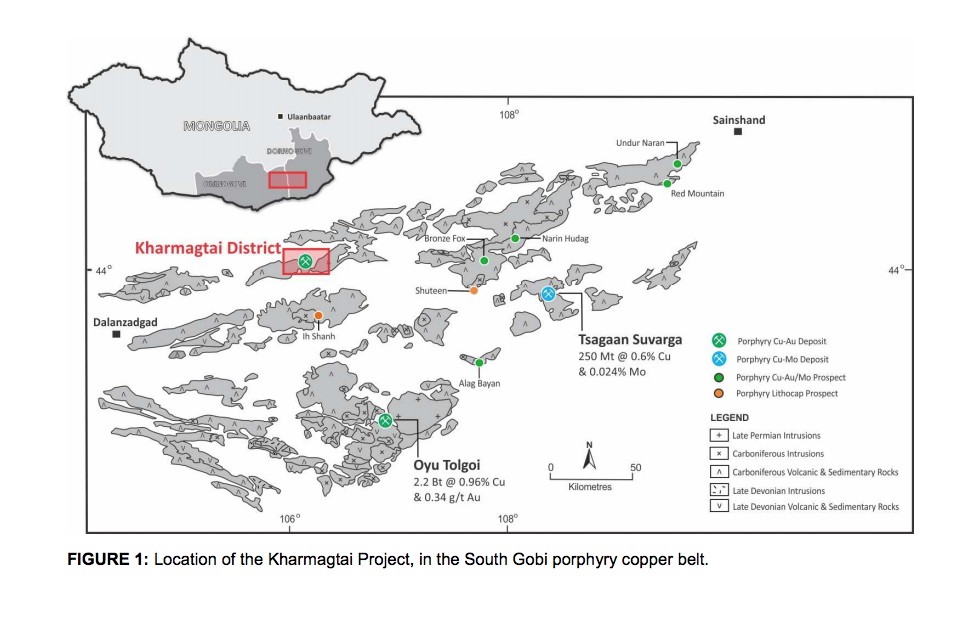Kharmagtai – excellent gold deportment results support previous metallurgical work

Xanadu Mines Ltd (ASX: XAM – “Xanadu” or “Company”) is pleased to provide an update on ongoing metallurgical work at its flagship Kharmagtai copper and gold project located in the South Gobi region of Mongolia
HIGHLIGHTS
Detailed scanning electron analysis shows that gold should report to a copper concentrate as free gold inclusion
• Gold grains occur as both native gold grains and with silver as electrum
• Chalcopyrite analysed contained no detectable deleterious elements • Gold grains range up to 100 microns in size
• New results build upon previous metallurgical studies where gold recovery to the rougher concentrate was very high. Xanadu’s Executive Director & Chief Executive Officer, Dr. Andrew Stewart, said “These above average results, as expected, show that gold occurs as coarse grains in association with principle copper sulphides.
While further testing is required as the project advances, we see no significant hurdles to producing a high-quality concentrate via standard processing pathways from the Kharmagtai project. These results allow us to focus on the drilling underway which is expanding the resource and targeting near-surface porphyry copper-gold deposits within this largely under-explored porphyry copper-gold district.”
NEW GOLD DEPORTMENT STUDIES
Twelve samples from Kharmagtai have been sent for detailed petrological and scanning electron microprobe analysis. The objective of this work was to determine the location of gold across all three zones of the Kharmagtai Deposit (Copper Hill, White Hill and Stockwork Hill). Petrological and scanning electron microprobe work showed most of the gold to occur as separate grains included within the copper bearing sulphides (chalcopyrite and bornite) and pyrite rather than as a solid solution within the sulphides (Figures 3 to 5).
These grains range up to 100 microns in size and include native gold and electrum. Some minor gold grains also occur in silicate minerals and magnetite. The copper sulphides analysed showed no trace metal within them as solid solution, indicating the sulphides from these samples should produce concentrates free of significant deleterious elements.
PREVIOUS METALLURGICAL STUDIES
Initial metallurgical work was reported on the Stockwork Hill zone of the Kharmagtai deposit in September 2016 (ASX release dated 1st September 2016). This work investigated copper and gold recoveries, grinding test work and an optical microscopy from the tourmaline breccia mineralisation at Stockwork Hill. These studies returned above average results from moderate grind sizes within a standard crush-grind-flotation process using low collector addition and from uncleaned rougher concentrate.
The results of this work are summarised below with more detail found in ASX release dated 1st September 2016.
• Copper recoveries into a rougher concentrate ranging between 93.6 to 95.3% Cu
• Gold recoveries into the rougher concentrate ranging between 93.4 to 95.4% Au ASX/MEDIA RELEASE By electronic lodgement | Page 2 of 19
• Silver recoveries into the rougher concentrate ranging between 86.7 to 89.9% Ag
• Exceptional recoveries from simple flotation testing using low collector addition
• Simple ore mineralogy with vast majority of copper as chalcopyrite
• Indicative grinding power requirements (Bwi 18.9 kWh/t) average for this rock type; and
• Grind sizes tested ranged from 120 microns to 180 microns
Source: www.gogo.mn
